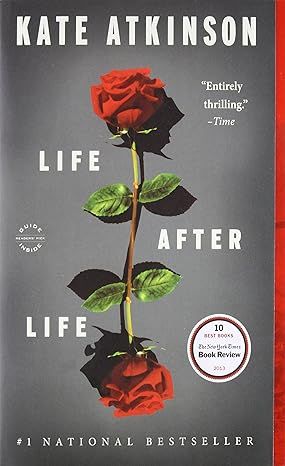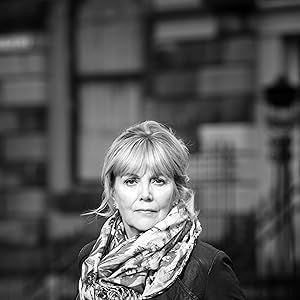Life After Life: A Novel
4 out of 5
27,174 global ratings
What if you could live again and again, until you got it right?
During a snowstorm in England in 1910, a baby is born and dies before she can take her first breath.
During a snowstorm in England in 1910, the same baby is born and lives to tell the tale.
What if there were second chances? And third chances? In fact an infinite number of chances to live your life? Would you eventually be able to save the world from its own inevitable destiny? And would you even want to?
Life After Life follows Ursula Todd as she lives through the turbulent events of the last century again and again. With wit and compassion, Kate Atkinson finds warmth even in life’s bleakest moments, and shows an extraordinary ability to evoke the past. Here she is at her most profound and inventive, in a novel that celebrates the best and worst of ourselves.
560 pages,
Kindle
Audiobook
Hardcover
Paperback
Audio CD
First published January 6, 2014
ISBN 9780316176491
About the authors
Kate Atkinson
Kate Atkinson is an international bestselling novelist, as well as playwright and short story writer. She is the author of Life After Life; Transcription; Behind the Scenes at the Museum, a Whitbread Book of the Year winner; the story collection Not the End of the World; and five novels in the Jackson Brodie crime series, which was adapted into the BBC TV show Case Histories.
Read more
Reviews
B. Capossere
5
Great concept greatly executed
Reviewed in the United States on May 25, 2013
Verified Purchase
What is it that drives us to pick up and complete a novel? A plot that carefully mortars brick upon brick, each clicking neatly together giving us no choice but to wonder "but then what?" until we look up surprised to find ourselves at the end? A character so intriguing we feel compelled to follow along wherever their thoughts and actions lead us? The range and depth of emotions that buffet us as we're swept along? Any one or two or all of these?
What in the world, then, is Kate Atkinson thinking in her newest work, Life After Life? In giving us Ursula Todd, who struts not just one life on the stage but dozens of them, each time being ushered off in a fall of darkness only to appear onstage again in the next scene, none the worse for wear, Atkinson seems to breaking nearly every contract between author and reader.
You want to care about this character? Too bad, she's gone a few dozen lines in from the start:
No breath. All the world come down to this. One breath. Little lungs, like dragonfly wings failing to inflate . . . Oh, ma'am' Bridget cried suddenly, She's all blue, so she is.'
You want to feel sad about this poor baby's death? Or the grieving mother? Don't, because a page later none of it happened:
"`A girl, Doctor Fellowes? May I see her?' "Yes, Mrs. Todd, a bonny, bouncing, baby girl . . . She would have died from the cord around her next. I arrived at Fox Corner in the nick of time.'"
You want to see what happens after the little girl down the lane is murdered, after Ursula is raped, after Ursula marries a wife-beater, after she shoots Hitler? I'll tell you what happens: the little girl down the lane isn't murdered, there is no rape, Ursula never marries, she doesn't shoot Hitler. Spoiler alert. Oh wait, you can't spoil a book with more than a dozen different "endings."
And so it goes for five hundred pages, with Ursula's lives ranging from a half-a-page in length to more than a hundred, each of them interrupted at some point by the "fall of darkness." But it's not "Game Over;" it's "Resume Game." And so the character dusts herself off, climbs on stage once again, and keeps moving forward, sometimes from that same fatal moment, sometimes leaping years back in time to begin moving toward it all over again. And some times, if she's lucky, she gets the occasional moment of déjà vu that lets her evade some of the rougher moments in her past lives, dodging the bullet she only half-senses is wending her way.
This is an author throwing out all that is supposed to keep us readers engaged. And yet, somehow, it still works. Some of Ursula's deaths, especially the early ones, are sharply witty in a macabre kind of way, like those posters with the Gorey illustrations of little kids dying in various inventive ways. But others are surprisingly moving, despite our assurance that "this too shall pass" at the mere turn of a page. And knowing things can change begins to make us fervently wish it to be so; we want these horrible things to not happen to her. And sometimes our wishes are granted. This being the early 20th Century though, not always. This is the century, after all, of World War I, the flu epidemic, World War II, the Holocaust, the Blitz. Some things, no matter how many lives one has, so long as one lives them, can't be avoided.
We also care about those who move in and out of Ursula's lives, all of whom pretty much remain the same regardless of which life they appear in, including but not limited to: Hugh, her warmly approving father; Sylvie, her more sarcastic and biting mother who is less than happy but doesn't seem to know what to do about it; Aunt Izzie, the wild-at-heart there-when-she-is-needed black sheep aunt; and Maurice, her obnoxious rising-star in the Home Office brother. This novel is as much about familial relations as it is about historical events and Atkinson brings her usual sharply honed eye to bear on both equally well--the little domestic moments at dinner or at play and the more grandly dramatic moments involving exploding bombs and rescue missions racing against time.
The period details of the blitz bring that time fully to life, and not only in the big moments. One of my favorite lines is when one of the characters says to Ursula, "it's just the general sense of dirtiness, as if one will never be clean again, as if poor old London will never be clean again. Everything is so awfully shabby, you know?" It's such a mundane complaint, such a small domestic complaint--shabby-- the sort of line that is so mundane, so "non-dramatic" that most authors wouldn't have thought of it, and yet, it feels like such an honest human complaint, one that fits perfectly naturally along all the more dramatic, bigger reactions to constant bombings and fires and deaths--the sobbing and screaming and senses gone numb. "Perfect" is a word that could be ascribed to many of the lines and moments in this book.
It's a writer's book beyond its polished craft though. It's also an author showing us what's under the novel's hood. It's almost as if we're perched over her shoulder, watching her write draft after draft, rolling each up into a little ball and tossing it onto the floor (Yes, I know that doesn't happen anymore, but "hitting `Save As' and renaming each version" doesn't quite have the same feel) before trying again: "Hmm, I could have Ursula eschew university. No, she'll go into classical studies. No, better yet, modern languages. Maybe she ends up in Bletchley Park. Or, wait, what if she ends up at a table with Hitler. With a gun!"
This is a book then that can be enjoyed on several levels, even if neither works on us in the usual fashion. Then again, its strengths are what one would expect of any particularly good book: vivid characters; lively, precise prose that can startle with its originality; attention to detail; a range of emotions. As for its (few) weaknesses: her abusive husband is not as fully formed as the other characters, feeling a bit too much like a creature of plot. But as he's given very little page time, it's a minor complaint. It's perhaps a little overly long; I admit to temporarily bogging down a little in the blitz scenes, as vibrant and wholly re-created as they are. I wouldn't cut much, maybe 30-40 pages in that section, and only very judiciously as they contain some of the most powerful moments in the book. What more surprising is how non-repetitive it feels, this novel based on a Groundhog's Day kind of premise, thought writ larger than the Bill Murray movie (also a great story--we should see more of these).
So what does it all add up to, all these chances to relive a life? It would have been easy to take the Aesop's Fable way out, to have Ursula "learn something" from the accretion of experience, something big idea about life the author could pass on to the reader via Ursula's big epiphany at the end. So props to Atkinson for not going that route. Yes, Ursula sometimes remembers enough to avoid a horror or two, but it's at the subconscious level. Yes, there's some talk about cycles and time and reincarnation, mostly with a psychiatrist her concerned parents have her see for a while, but these are short-lived conversations and simply raise an issue rather than hammer anything home. Ursula doesn't learn anything in enough detail and substance to "get life right." But she does learn "You just have to get on with life . . . We only have one after all, we should try and do our best." I don't know what other lives Kate Atkinson might have lived, but based on this and her detective novels (highly recommended), she's doing her best with her novelist one. (this review originally appeared on fantasyliterature.com)
Read more
21 people found this helpful
Book Club Mom
5
The River of Life After Life
Reviewed in the United States on December 2, 2013
Verified Purchase
This is one of the best books I’ve ever read. It is a complicated story that begins with both the birth and death of Ursula Todd and moves in different directions as Ursula’s life is saved or rewritten, leaving the reader to wonder whether we are seeing how fate could have taken different turns or if Ursula herself is somehow able to rewind tragedies and try to get them right the next time.
Set in England and beginning in 1910, this story spans both World Wars, but focuses on the period during World War II and the heavy toll it took on Europe. Ursula’s different life paths place her at the center of the German bombings in London for much of the book. In a separate turn of life, she spends time in Germany and twice almost manages to rewrite Adolf Hitler’s fate. I spent some time reading reviews of Life After Life and, instead of finding all four- and five-star reviews, I found a considerable number of reviews that complained about how complicated and hard to follow this story is. I think there is some truth in these comments and the only way to thoroughly enjoy Life After Life is to study it and take notes - it is worth this effort! I read Life After Life on my Kindle and, although I like paging back and forth with a real book, the “Search” feature made it easy to check on the many details. As I did all this, I started to see Ursula’s lives as a kind of river, with tributaries taking it in different directions.
There are many things I like about Atkinson’s writing style in Life After Life. She makes many references to animals, particularly foxes, rabbits, dogs and cats, and ties both their influence and fates into the characters. For example, a seemingly unimportant dog, later named Lucky, changes Ursula’s fate and has a strong positive influence on both Ursula and her brother Teddy. I like the wholeness of this idea, humans sharing the world with nature and other creatures. I also like the way Atkinson repeats and ties together phrases and presents them in different scenarios. The phrase, “Practice makes perfect” is particularly meaningful as Ursula’s lives rewind and play back with different twists. Sylvie’s frequent comment, “Needs must” is repeated by her daughters at important times and is an example of their mother’s influence, despite their emotional distance from her. In addition, I think the author’s use of dialogue is great, especially when she ends chapters with a short comment. What else is there for Izzie to say, for example, when Ursula shows up at her door twice with bad news? “You’d better come in then.” That says it all.
Atkinson uses small details that change as this story moves forward and backwards. These details appear most notably in the scenes with Bridget and the Spanish flu. Ursula’s strong desire to save Bridget leads to a variety of outcomes as do her efforts to save Nancy from an awful fate. Many iterations of these scenes lead to different outcomes, some ironic, some heartbreaking and I think Atkinson touches on the “What if?” way of thinking that we all experience in our lives.
I think the repetition of Ursula’s apartment being bombed is the strongest part of the story and Atkinson is able to describe these experiences in a way that shows what it must have been like for people living in London during the Blitz. She tells the story through an omniscient point of view and her use of grim humor shows how Ursula is able to distance herself from this destruction and death.
I always have favorite characters and this time it’s Hugh. He loves Ursula, makes his point with Sylvie and makes you wish to know someone like him. Evil characters such as Maurice are easy to hate and there are plenty of in-between and complicated characters with complicated traits that make you feel conflicted.
There’s a lot more to Life After Life, most notably Hitler’s treatment of Jews and the ultimate “What if?” question: Could the Holocaust have been prevented if Hitler had been killed before he became evil?
Ursula asks Ralph, “Don’t you wonder sometimes, if just one small thing had been changed, in the past, I mean. If Hitler had died at birth, or if someone had kidnapped him as a baby and brought him up in – I don’t know, say, a Quaker household – surely things would be different.”
And Ralph’s answer – “But nobody knows what’s going to happen. And anyway he might have turned out just the same, Quakers or no Quakers. You might have to kill him instead of kidnapping him. Could you do that? Could you kill a baby?” So in the end, there is still this dissatisfying answer about fate and stopping evil.
An open ending leaves many questions to this book. But friendship and love and happiness find a way to develop in even the most terrible scenarios of this story and I think this is the author’s message of hope.
Ignore the negative reviews. This book is definitely worth the effort!
Read more
17 people found this helpful
A Kirk
4
A far better than average What If I Could Do It Differently book
Reviewed in the United States on May 25, 2015
Verified Purchase
I came to this book indirectly. A bookshop opposite my bus stop had a sign in the window for its successor, A God In Ruins. That led me back here, with mixed feelings. While I'm (perhaps too) attracted to the "What If" genre, it's only occasionally done well and I feared that this would be nothing more than Ken Grimwood's "Replay" reheated. (It's not. Not even remotely. And that's not a reflection one way or the other on Replay, they're simply very different books.) In any case I gave it a chance and read the introductory chapters, one of which introduced the central character's parents. A couple of lines had me with my face in my hands thinking "Not the 'free spirited woman stifled by a boring, unimaginative man' thing again, because that NEVER gets old." And thankfully, it wasn't. Again, not even remotely. Once I got into the story proper I could barely stop until I'd devoured the entire thing. What this is, in fact, is probably one of the most finely crafted novels I've read, on many levels. I'm giving away nothing (that isn't on the dust jacket) by saying that it's the story of a woman (Ursula Todd) whose life keeps repeating from her birth in 1910 up to her death in... well, that varies. She has no direct recollection of her past lifecycles, up to a point. She has only instincts about the things that happened, some of which she can influence, some of which she can't. The path of her own life runs differently depending on events that happen or don't; sometimes the difference is radical, sometimes more subtle. Not all of these things are in her control, as other people also make different decisions along the way. None of us are complete masters of our own destiny, much as we would like to believe otherwise. I don't think we ever see one complete path of Ursula's life, and this restraint on the part of the author is one of the things that make it such a good piece of writing. It must have been tempting to work through the whole timeline each time and milk it for all it's worth. Instead we're just taken to key points in Ursula's life in each cycle. Sometimes briefly, sometimes in detail. We see the things that determine the current cycle's path, or the outcomes of those things. Sometimes differences that have already occurred are alluded to, sometimes they're assumed to have changed in the way they had in a previous cycle. And sometimes it's left to the reader's imagination. (And at one point Atkinson throws us a nicely crafted curve which tricks the reader, but I can't describe that without a spoiler. It's after the war, and you'll know it when you see it. Another example of this is with Ursula's parents. There's another entire story there, yet we're offered only glimpses into it. We know about certain events but we never get to find out what the context of those events was... much as Ursula herself doesn't. In real life you can never know everything about another person, no matter how close you are. Atkinson resists the temptation to prop the reader into the "God seat" and take them behind the scenes. Oddly this makes the read more rather than less gratifying. There are no neatly wrapped endings or explanations, no unquestionable truths. (Not even for Ursula's own life, much less those that her life crosses with.) The reader is therefore drawn into the story, to make of certain things what they will, never knowing for sure whether they were right about them. Again, much like life, really. Aside from which it's much harder to achieve certainty here, given the looping nature of the narrative. Did Ursula's mother have an affair in one of Ursula's lives but not another? Did she have an affair in none of them, and the hint that we were thrown in one cycle was simply an out of context distraction? More intriguingly, has Atkinson preserved material for another follow up book or two? Another thing that appeals about this is the characterisation. It would be hard to say that we know many of the characters intimately. They're sketches rather than detailed paintings, but again, that's pretty true to life. However they're generally consistent sketches, though with some discordant notes here and there. (Even in the little details; I could never imagine her sister Pamela smoking as she did in one cycle, for example (especially given her scientific leanings and her husband's description of autopsies of smokers), but it's not beyond the bounds of possibility especially given that in that cycle her mother did as well.) Yet these notes are not so much "completely out of character" as "this is another path this character might have gone down". Another example is when Ursula found out that her one time / some times boyfriend had acquired a taste for a particular sport in his later years despite disliking it when she knew him. We all change... and doubtless we would change in different ways in different circumstances. This, I think, is part of Atkinson's point. For me the key thing about the characters is that there is a diversity of them; likeable, unlikeable, difficult, sharing, selfish... without them devolving into mere caricatures. There is a certain sameness about how people are supposed to react to the characters - for example, everyone supposedly loving Teddy when I only felt somewhat indifferent to him and couldn't understand why he was the loveable one - but I think that was done mainly to avoid the need to get bogged down in minutiae. This, after all, is Ursula's story. Teddy has his own in the sequel, something that I have no doubt Atkinson had in mind as she was writing this one. Finally the storytelling. In a couple of instances I could see clearly where things would lead, and yet the writing, the characters and the story itself kept me moving along with it to discover the specifics. Your mileage may vary, but I for one wasn't disappointed. There is one area where it squibs a little, but unfortunately I can't say very much about that without introducing huge spoilers. In the afterword Atkinson refers to one of her motivations in writing the book, which is one of history's "What Ifs". And yet that very thing is what is ultimately glossed over. Suppose that your life was to be dedicated to nudging history in a different direction? First, "why you?" given that (in this case) someone born 5 years earlier and elsewhere in the world would be much better at giving it that nudge? Second, can you even make a difference to the broad sweep of history, as opposed to the lives of a few individuals? (Michael Crichton's "Timeline" had an interesting discussion on this. The book, not the movie. Gods no, not the movie, please.) Third, if you do change it, how can you be sure that you are changing it for the better rather than the worse? Fourth, even if you do change it for the better is that what your life then becomes; an endless loop of going back and doing the same sequence of things over and over again, for if so, what's the point? Stephen King's 11/22/63 spent chapters on some of these issues (and King is hardly a terse writer), yet they remain relatively unexamined in "Life After Life". But in the overall scheme of things that's a minor niggle in a book as good as this one. When it comes to the difference between words and deeds, my next deed after posting this review will be to buy its sequel.
Read more
29 people found this helpful
John Hight
4
Deeply philosophical and very enjoyable
Reviewed in the United States on May 6, 2013
Verified Purchase
Summary: A wonderful book that is at once deeply philosophical and thoroughly enjoyable, while bringing the first half of the 20th century to vivid life.
For a book titled Life after Life, there certainly is an abundance of death in Kate Atkinson's wonderful new novel. Given the setting - the book's arc encompasses both World Wars - that is hardly surprising. Atkinson, however, takes her exploration of death a step further. She makes it omnipresent in a way that would have pleased the philosophers Søren Kierkegaard or Martin Heidegger. Kierkegaard wrote that most people live their lives while studiously ignoring their impending death. That is to say, we know that we will someday die, but we treat our death as a future event with little bearing on the present. We are mistaken. Death is real, inevitable, and can come at any time. Kierkegaard was only halfway joking when he wrote that when accepting an invitation to a party, you should not say, "I shall certainly attend," but rather, "I shall certainly attend your party, but I must make an exception for the contingency that a roof tile happens to blow down and kill me; for in that case, I cannot attend."
If Kierkegaard had lived today and had written a novel (a lot of "ifs" I know, but bear with me), it might have looked something like Life after Life. Martin Heidegger - who shared Kierkegaard's philosophy of death - wrote that "As soon as a man comes to life, he is at once old enough to die." And sure enough, the book's heroine Ursula Todd has no sooner been born than she departs this world, her umbilical cord wrapped around her little neck. This is no spoiler. It happens within the first ten pages. As the story unfolds, Ursula dies, and dies, and dies. She drowns. She falls. She is crushed. She is shot. She asphyxiates. And each death starts a new life, a chance to do it over again, a chance to get it right.
The result, for me, was a rather novel experience in which I read in constant anticipation of death, the precise state of mind in which Kierkegaard and Heidegger insisted we should all live. The question constantly lurked: when will Urusula die? Rather than being morbid, this obsession with death adds an extra measure of poignancy to each telling of Ursula's life. It also allows Atkinson to explore the contingency of life. As we go through cycle after cycle of Ursula's life, we see how the smallest events can change the course of an entire existence. A chance encounter with one of her brother's friends leads a young Ursula to a life of misery. A decision to take a walk saves a life. The gas on the stove flits out for a moment, and she dies. It stays on, and she lives another twenty years. Chance plays a role, as do the decisions of Ursula and the cast of interesting characters that surround her. There is no fate, only repetition.
Which is another of Kierkegaard's favorite subjects. Indeed, I suspect that Atkinson has read her fair share of the Danish philosopher. Fortunately, her book is a more enjoyable read than anything Kierkegaard produced (which is not damning with faint praise, as I rather enjoy Kierkegaard). Normally the use of words like "fug", "thrawn", and "pulchritude" might be enough to turn me off, but Atkinson is a good enough writer to get away with such embellishments. And she brings the past to vivid life, particularly the Blitz. Some of the images she invokes - crawling though the ruins of an apartment building and finding oneself kneeling on the spongy remains of a baby caught in the explosion - will stick with me for some time, though I might rather forget them. And I was glad to see that Atkinson also takes us inside the German bomb shelters. For as horrible as the Blitz was, the bombing of Germany was much, much worse. More than 40,000 civilians were killed in England, while between 300,000 and 500,000 German civilians died in RAF bombings that did little to aid the Allied war effort, but which certainly exacted a grizzly revenge for the Blitz.
Life after Life does not have much in the way of traditional plot, nor could it, considering the frequent deaths of its heroine. It is a meditation on the nature of life and a character study, and fortunately, Atkinson has peopled it with a number of compelling characters. Ursula's acerbic mother and kind father, her boorish older brother and sweet, clear-headed sister Pamela, her unorthodox aunt, her lovers, neighbors, and friends are all vividly portrayed. Indeed, the cast of characters is rich enough that the necessarily repetitive nature of the novel never becomes tedious. In addition, Atkinson does a wonderful job of continually tweaking the book's formula in order to keep the reader interested. When a moment in her life starts to grow stale, the book moves on. Sometimes, I longed for Ursula to dies. Sometimes, I rooted for her to live.
In the end, Ursula embraces her mortality in a way that is a bit fantastical, but utterly satisfying. Kierkegaard felt that to truly live, we must accept that we could die at any time. By the end of Life after Life, it is safe to say that Ursula Todd has surely done so.
Read more
9 people found this helpful
LJ
3
Well written, but lacking depth
Reviewed in the United States on February 5, 2014
Verified Purchase
This was a weird book. It starts off in a VERY confusing manner... I didn't really "get" what was going on at first. The repetition was a little bit overdone, and I think could have been fleshed out just a little more. It was just OK.
In the big picture, the book is very well written and touches on some truly interesting philosophical questions. The premise of repeating life over and over and the recognition that small actions can have far reaching consequences is a good one, but to me it just seems this book went about things in all the wrong ways. There were characters that really had no place in the book (the fact that the midwife couldn't get there because of snow affected... nothing? Ben Cole was important... why? Character after character seems to only play a very minor role in ONE of her lives - Roland, for example). I just didn't see the point in a lot of the extra details.
We are invited to view the night of her birth over and over and over. After a while it just gets old. We get it. She dies and is reborn. I like that she (mostly) has no real concept of her "ability". Yet when she DOES choose to take her power into her own hands, that revelation is glossed over - you would think after sticking through life after life, the reader would be rewarded with Ursula's epiphany of why she keeps having these "leaking memories". But no. It's really only loosely addressed. She achieves her goal in the end, but then we are left hanging without knowing the result of that last, historically significant action. What, then, is the point?
As for character development, it really fell short. It all just felt a bit... shallow. I neither loved nor hated ANY of the characters. There were so many that were just superfluous. Ursula herself is held at a distance, and we never truly get to know her - especially since she's a bit of a different person in each life. Izzie might just be the best character of the novel, and she's but secondary. Hugh seems like a kind father, but he never does or says anything to prove that assumption. We are never told why Maurice is such an ass. In my opinion, there could have been fewer characters that were more fully developed and the story would have been better served.
Where the book shines is in the areas OUTSIDE the pages - when the reader can imagine what is going on in these oft repeated lives, and the philosophies this book leads one to ponder. Unfortunately, this area is outside of the author's direct control and as such, really has no bearing on the overall review of the book itself. There were several bomb scenes that were quite compelling, and I have no arguments with the author's talent with turning a phrase. But it just had me puzzled throughout the entire book, as I kept waiting for some significant plot twists and was left wanting.
Read more
17 people found this helpful
Best Sellers
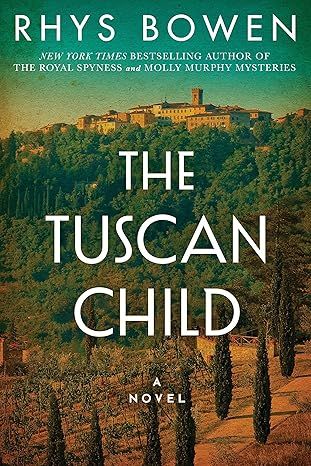
The Tuscan Child
4.2
-
100,022
$8.39
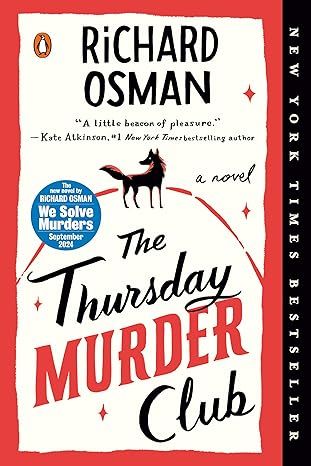
The Thursday Murder Club: A Novel (A Thursday Murder Club Mystery)
4.3
-
155,575
$6.33
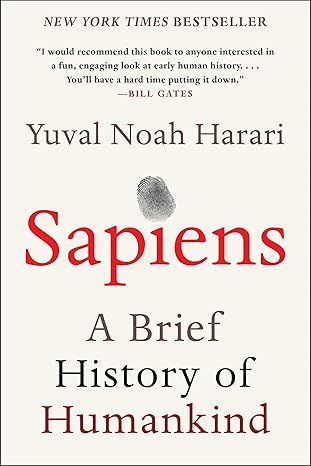
Sapiens: A Brief History of Humankind
4.6
-
140,302
$13.49
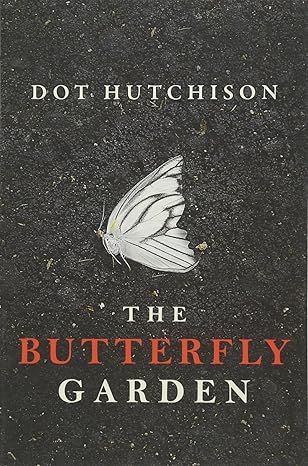
The Butterfly Garden (The Collector, 1)
4.3
-
88,556
$9.59
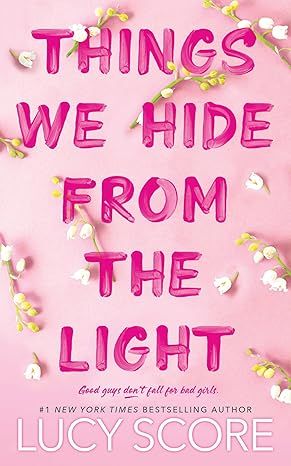
Things We Hide from the Light (Knockemout Series, 2)
4.4
-
94,890
$11.66
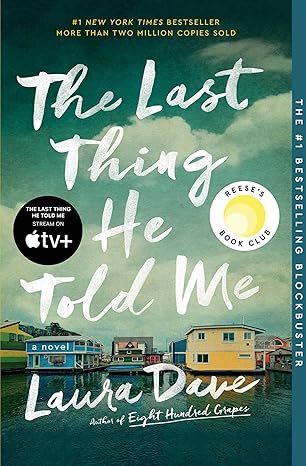
The Last Thing He Told Me: A Novel
4.3
-
154,085
$2.99

The Perfect Marriage: A Completely Gripping Psychological Suspense
4.3
-
143,196
$9.47
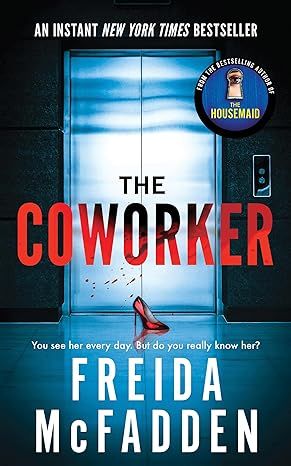
The Coworker
4.1
-
80,003
$13.48

First Lie Wins: A Novel (Random House Large Print)
4.3
-
54,062
$14.99

Mile High (Windy City Series Book 1)
4.4
-
59,745
$16.19

Layla
4.2
-
107,613
$8.99
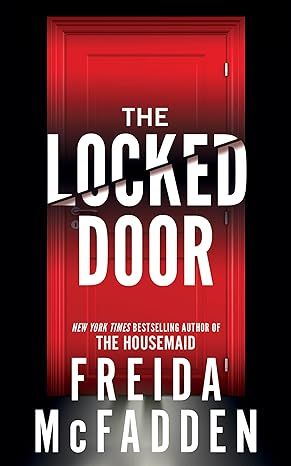
The Locked Door
4.4
-
94,673
$8.53
